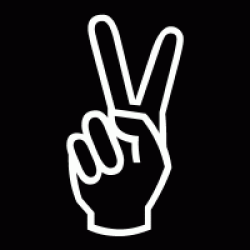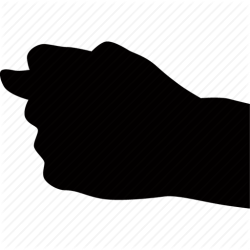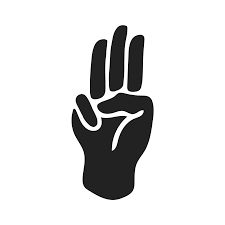What's the meaning of the The Fig Hand Gesture »
The Fig Hand Gesture
This page is about the meaning, origin and characteristic of the symbol, emblem, seal, sign, logo or flag: The Fig Hand Gesture.

The fig sign is a mildly obscene gesture used in Turkish and Slavic cultures and some other cultures that uses two fingers and a thumb. This gesture is most commonly used to deny a request.
Another use of this gesture is for warding off evil eye, jealousy, etc.
In ancient Rome, the fig sign, or mano fico, was made by the pater familias to ward off the evil spirits of the dead as a part of the Lemuria ritual.
The hand gesture may have originated in ancient Hindi culture to depict the lingam and yoni.
Among early Christians, it was known as the manus obscena, or "obscene hand".
Recently, a Ukrainian word for this gesture "дуля" (dulya) has also become a jargon to refer to Control-Alt-Delete. ("...you need three fingers to press the buttons. So it's like telling somebody (a computer in this case) to get lost.")
The letter "T" in the American manual alphabet is very similar to this gesture.
- 13,163 Views
Graphical characteristics:
Asymmetric, Closed shape, Monochrome, Contains curved lines, Has no crossing lines.
The Fig Hand Gesture is part of the Hand gestures group.

More symbols in Hand gestures:
Gestures are a form of nonverbal communication in which visible bodily actions are used to communicate important messages, either in place of speech or together and in parallel with spoken words. read more »
Citation
Use the citation below to add this symbol to your bibliography:
Style:MLAChicagoAPA
"The Fig Hand Gesture." Symbols.com. STANDS4 LLC, 2025. Web. 22 Feb. 2025. <https://www.symbols.com/symbol/the-fig-hand-gesture>.










Have a discussion about The Fig Hand Gesture with the community:
Report Comment
We're doing our best to make sure our content is useful, accurate and safe.
If by any chance you spot an inappropriate comment while navigating through our website please use this form to let us know, and we'll take care of it shortly.
Attachment
You need to be logged in to favorite.
Log In